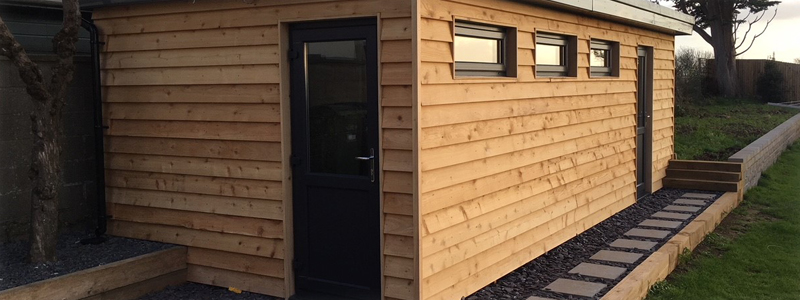Articles: British Cedar Cladding
With price rises effecting all industries across the world, we are getting used to having to find products that offer greater value for money. A great example of this is British Cedar cladding, which hasn’t rose too much in price over the last 24-48 months, whereas Canadian Cedar has more than doubled!
The imported timber does have some advantages over the British including lower knot content and being more durable, however, the homegrown has really come into its own. Suitable for cladding and light construction, British Cedar is a remarkable timber that is a creamy red in colour (which does silver grey over time).
British Cedar Cladding is available as T&G, Rainshield, Shiplap, Feather Edge and Waney One Edge so you can choose a contemporary or traditional finish to your personal taste. Although it doesn’t have as long a shelf life as Canadian, homegrown Cedar is still very durable and can last 15-20 years as an external cladding.

Feather Edge British Cedar Cladding
To help provide more cost effective cladding we have started to offer four new feather edge profiles which offer great protection but are thinner than our IWC9 and IWC10. This enables us to offer feather edge cedar in thinner sizes that taper from 20mm-8mm and 16mm-6mm.
Going for a thinner profile has its advantages, the biggest advantages are the better price and the easier they will be to fit because they are lighter. The disadvantage being that they are slight weaker so more susceptible to damage, but the price may outweigh the risk.
British Timber to the fore
Cedar is not the only homegrown cladding that is worth looking at for an alternative to imported, Larch and Douglas fir are also readily available and highly suitable for cladding. These timbers are also more suitable for construction than Cedar and they are stronger, with Larch in particular easy to get hold of in C24 structural grade.







 Main Menu
Main Menu

